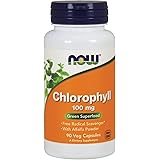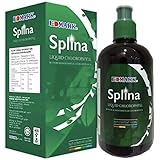Have you ever considered how profoundly your breath and movement influence your digestive well-being? This video, part of the Satvik Yoga Beginner Camp, offers a powerful exploration into a detox and reset flow, specifically designed to support your digestive system. It highlights how consistent practice of digestion yoga and pranayama can lead to both physical cleansing and mental stability.
The journey towards mastery in any area, including holistic health, demands consistent effort and dedication. It is acknowledged that obstacles will be encountered, and moments of boredom may arise, making continued practice seem challenging. However, overcoming these hurdles and steadfastly following your chosen path is recognized as an integral aspect of yoga. Today’s session particularly emphasizes the gut, guiding practitioners through a detox flow that incorporates numerous twists and turns, promising a dynamic and beneficial experience.
The Power of Twists in Digestion Yoga for Gut Health
Twisting postures are integral to a comprehensive digestion yoga sequence. These movements are purposefully designed to compress and decompress the internal abdominal organs, which include the stomach, intestines, liver, and kidneys. This action is thought to stimulate blood flow to these crucial organs, enhancing their function and aiding in the body’s natural detoxification processes.
During a twist, pressure is applied to the digestive tract. When the twist is released, fresh, oxygenated blood is allowed to flood the area. This increased circulation is believed to encourage peristalsis, the muscular contractions that move food through the intestines. Regularly practicing these twists can assist in releasing “stuck toxins” and promoting a more efficient digestive system, which is vital for overall gut health.
Key Twisting Asanas for Digestive Wellness
The video guides through several effective twisting postures, each contributing to the digestive detox. These poses are strategically integrated to work the abdominal area from various angles. Starting with gentle seated twists, the spine is rounded and opened, preparing the body for deeper engagement.
Further into the practice, the Marichyasana C is introduced, a powerful seated twist that specifically targets the abdominal organs. This pose is performed by bending one knee, placing the foot firmly on the mat, and twisting the torso to bring the opposite elbow outside the bent knee. This deep compression is very beneficial for stimulating digestion. Later, twists are explored in Downward-Facing Dog, where a hand reaches back to the opposite leg, intensifying the abdominal compression while stretching the spine. Anjaneyasana, or low lunge, also incorporates a twist, further engaging the core and digestive organs.
Supine twists, performed while lying on the back, offer a gentler but equally effective way to release tension and encourage gut mobility. These twists, especially when combined with “eagle legs,” are not only beneficial for the digestive system but also provide significant relief for the back, helping to release spinal compression. Each of these poses, when executed mindfully, contributes significantly to the body’s natural cleansing mechanisms.
Pranayama: The Breath of Life for Metabolism and Stability
Beyond the physical asanas, the session places significant emphasis on pranayama, or breath discipline. In the Patanjali Yoga Sutras, pranayama is identified as the fourth limb of ashtanga yoga, following the yamas, niyamas, and asanas. It is understood that a stable and deep breath contributes directly to mental stability, contrasting with the restless nature of the mind when breath is shallow or uncontrolled.
Deep breathing is not only crucial for mental calm but also for profound physical health benefits. It is explained that proper oxygenation of the body’s cells is essential for their optimal functioning. When cells receive insufficient oxygen, their ability to perform their duties fully is compromised. Pranayama, therefore, plays a critical role in properly oxygenating the entire body, which in turn supports efficient metabolism. This deep cellular oxygenation ensures that metabolic processes occur effectively, contributing to overall vitality and energy.
The Profound Benefits of Nadi Shodhana Pranayama
The practice concludes with Nadi Shodhana, or Alternate Nostril Breathing. This specific pranayama technique is highly regarded for its ability to balance the two hemispheres of the brain and to purify the “nadis” or energy channels within the body. It involves consciously inhaling and exhaling through one nostril at a time, guided by specific hand gestures using the thumb and ring finger.
Through Nadi Shodhana, the nervous system is calmed, stress is reduced, and mental clarity is enhanced. From a physiological standpoint, this controlled breathing method helps regulate the autonomic nervous system, shifting the body towards a more parasympathetic (rest and digest) state. This shift is particularly beneficial for digestion, as the body can then allocate more energy to processing food and absorbing nutrients efficiently. Regular practice of Nadi Shodhana is a cornerstone for those seeking holistic well-being, fostering a deeper connection between breath, mind, and body, and significantly supporting digestive health.
Consistency and the Holistic Path of Yoga
The initial wisdom shared in the video underscores the universal truth that achieving mastery requires long-term consistency. This applies as much to physical practices like digestion yoga as it does to any other life endeavor. The path of yoga is not just about performing asanas or breathwork; it is about cultivating resilience, pushing past discomfort, and maintaining dedication even when motivation wanes.
The philosophy articulated suggests that “everything falls under yoga.” This expansive view means that mindfulness, presence, and intentionality can be integrated into all aspects of life, whether one is working, caring for children, or engaging in formal practice. This perspective empowers individuals to view their entire existence as an opportunity for yogic growth, fostering endless possibilities for self-improvement and connection.
Integrating Yoga Beyond the Mat
The principles of consistency and mindful awareness, central to yoga, can be seamlessly integrated into daily life to support digestive health. For instance, being present during meals, chewing food thoroughly, and eating in a relaxed environment can significantly improve digestion, echoing the calm focus cultivated during pranayama. Just as twists physically cleanse the gut, conscious dietary choices and hydration contribute to internal purity.
Furthermore, managing stress through practices like meditation or deep breathing outside of formal yoga sessions has a direct positive impact on the gut-brain axis. The gut is often referred to as the “second brain” due to its extensive neural network, and its health is intimately connected to mental and emotional states. Thus, by embracing yoga’s holistic teachings—including ethical principles (yamas and niyamas) that guide our interactions and choices—a more harmonious internal environment is created, which inherently supports optimal digestion and overall vitality. This continuous engagement with yogic principles amplifies the benefits gained from focused practices like digestion yoga.











